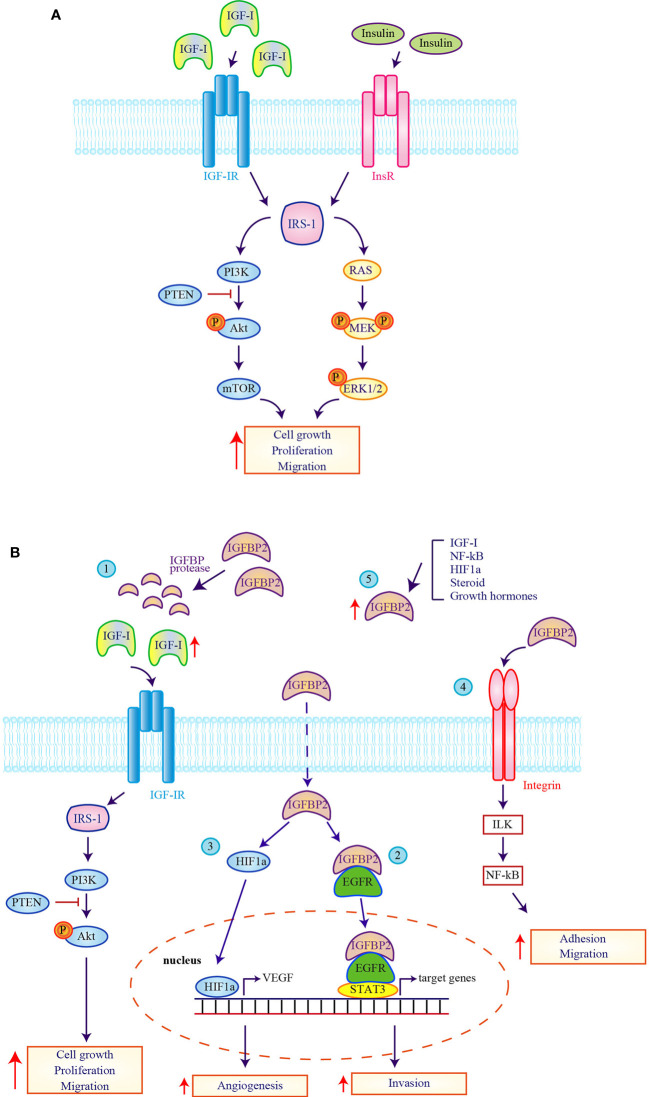Figure 1.
Expression and function of the insulin/insulin-like growth factor system in glioblastoma cells. (A) The pathogenesis and progression of glioblastoma multiforme (GBM) is mainly linked to the activation of Insulin-like growth factor 1 receptor (IGF-IR) and insulin receptor (InsR). The stimulation of IGF-IR and the activation of InsR promote the recruitment of IRS-1 and the activation of the mitogenic and pro-survival mediators Akt and ERK1/2 that contribute to increase (upward red arrow) GBM cell growth, cell proliferation and cell migration. (B) A pivotal role in regulating IGF-system action in GBM pathogenesis is provided by IGFBP-2. (1) The improper activity of protease that cleaves IGFBP-2 causes an increase of circulating-free IGFs (upward red arrow) and the subsequent activation of downstream pathway causing an increase on cell growth, cell proliferation and cell migration. The intracytoplasmatic and intranuclear activity of IGFBP-2 determines the activation of EGFR-STAT-3 (2) or HIF1a (3) signaling and the improvement of the transcription of their target genes. IGFBP-2 activates also the integrin signaling (4) which lead to the activation of the IGFBP-2/Integrin/ILK/NF-kB pathway that is responsible of the transcription of genes linked to adhesion and migration. Finally, stimuli induced by IGF-I, NF-kB, HIF1a, steroid and growth hormones (5) increase IGFBP-2 expression (upward red arrow) causing the activation of pathway linked to GBM progression.

